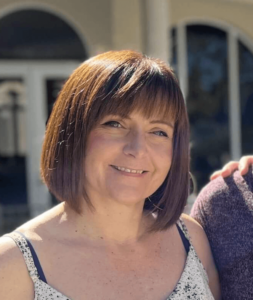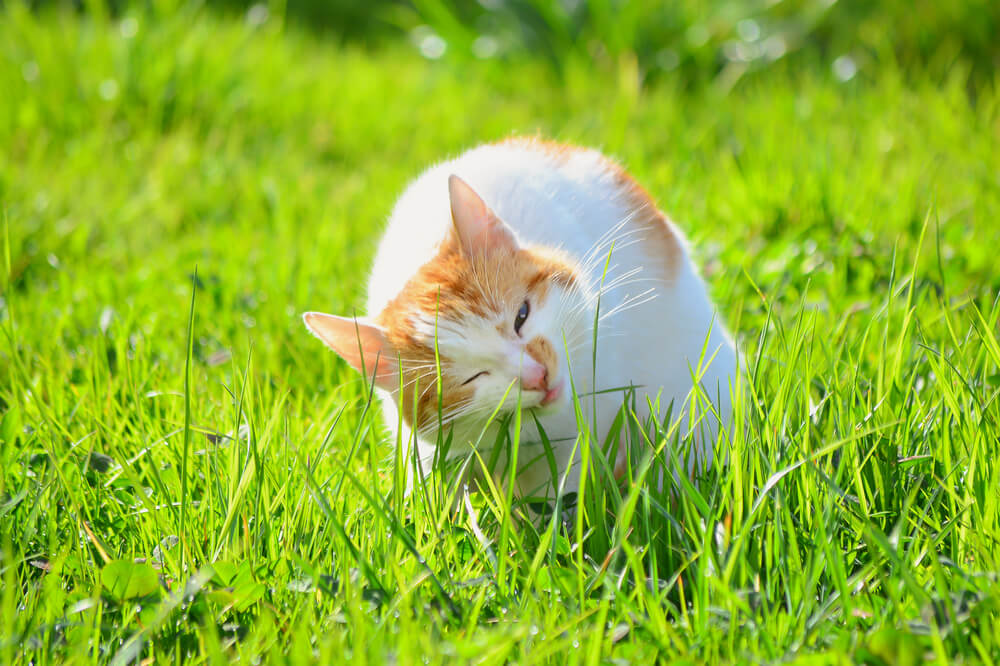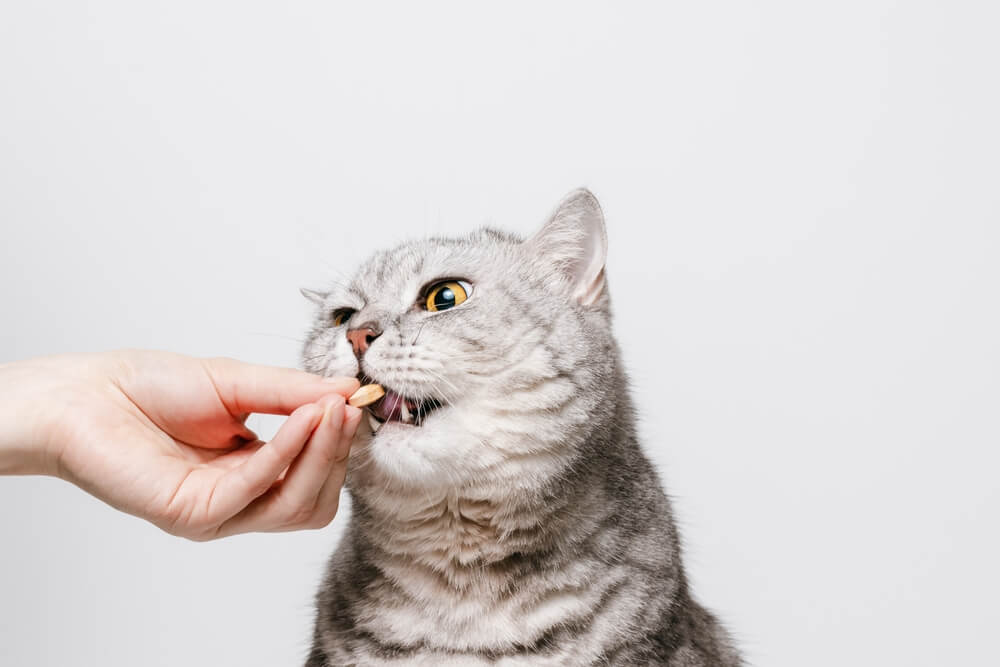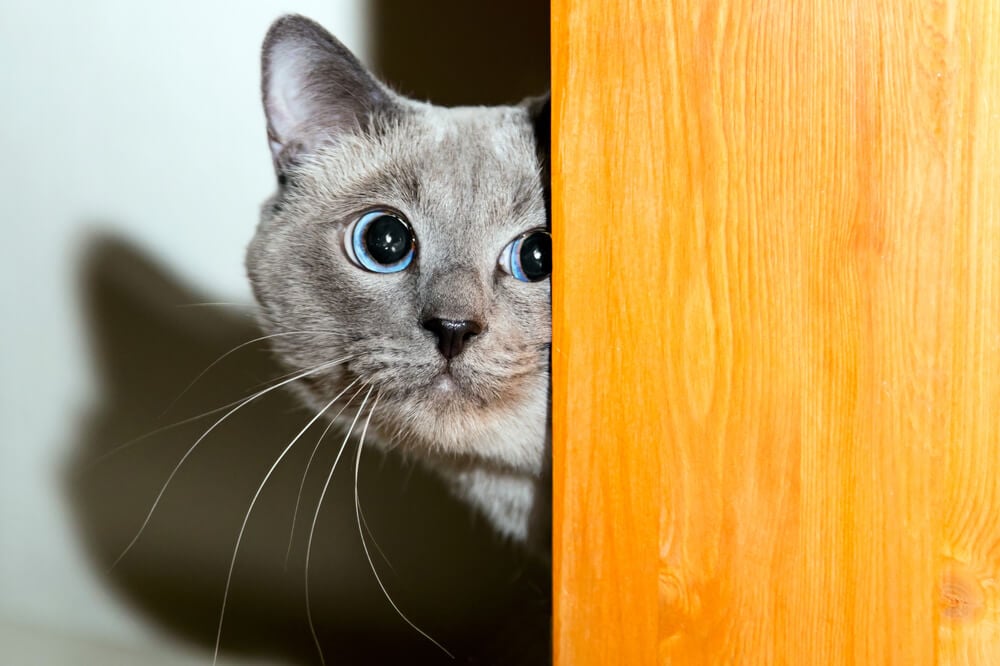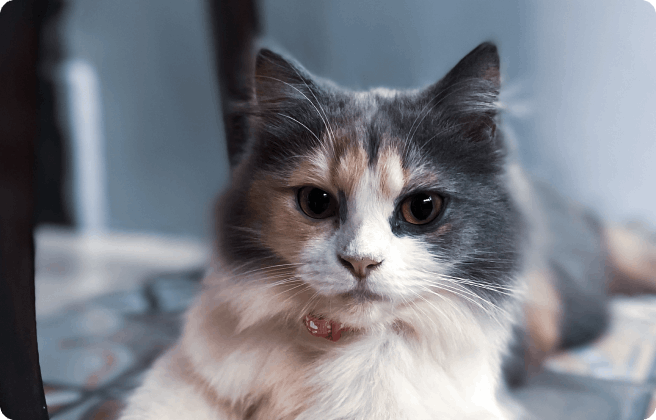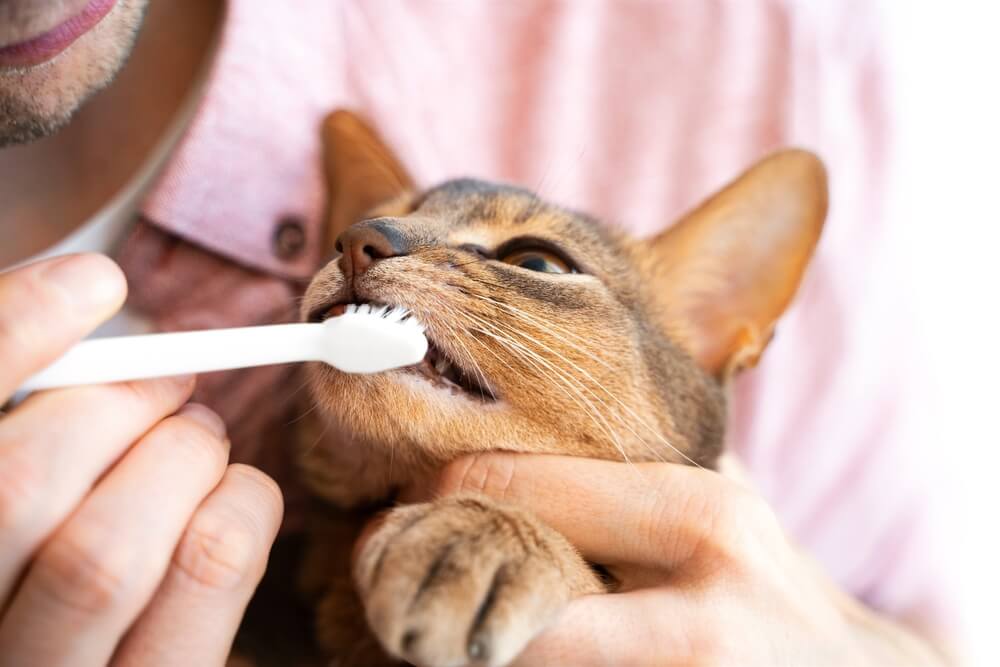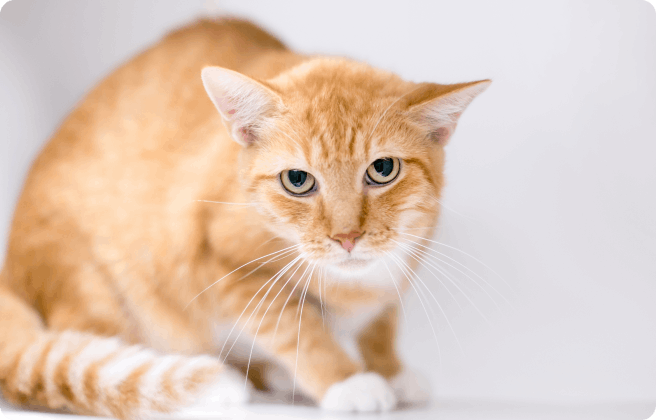
Sure, they might not be able to pick up a pen and their vocabulary is unhelpfully limited to ‘meow’, but that doesn’t mean cats are bad communicators. Instead, there are several key cues to look out for in a cat’s body language that will reveal how they’re feeling.
These subtle signs can be difficult to read at first – as a recent scientific study has proved – but with a little know-how and practice, you can become much more adept at understanding your cat’s mood and needs.
How to read a cat’s facial expressions
If your cat’s eyes are half-shut, or perhaps even completely closed, and their ears are in a soft and natural position, you can be reassured that they’re feeling safe and content. You might be familiar with this relaxed expression from when they’re lounging on the sofa next to you or on the receiving end of some gentle tickles. All is well.
You can normally tell something’s not quite right by looking at the eyes and ears. As an animal fiercely protective over their territory, a cat’s eyes will fully open and the pupils will dilate when they sense a potential threat or an incursion of some sort.
You can also see their ears becoming pointy and flicking about in order to hear as much of their environment as possible. Alternatively, ears pressed flat to the head, almost as if they’re shrinking away, would suggest that your cat’s fearful of something.
How to read a cat’s body movements
Take a look at their posture and poses to help build a rounder picture. If they’re sprawled out on a cushion or sitting comfortably, chances are they’re feeling fine.
That’s often not the case if they’re crouched down into a stalking position, almost as if they’re ready to pounce – this again might convey that they’re feeling anxious and on edge about something. Likewise, if they look to be making themselves as small as possible – cowering, hunching, head lowered – they could be worried and in need of a little reassurance.
At the opposite end of the scale, angry cats are sometimes known to make themselves appear much larger by puffing out their fur and arching their back, often accompanied by hissing and bared teeth. This is a natural response to ward off what they perceive to be a threat, or the feline equivalent of squaring up to somebody and asking if they want to take this outside.
It must also be mentioned that cats are the master of the mixed message. Take when they lie on their back and reveal their tummy – obviously, they’re asking for a tickle, right?
Not always. Their belly is the most vulnerable part of their body, so if they expose it, it’s likely they trust you. However, a stroke might be pushing it a bit too far and they’ve got all four of their claws in a raised position to let you know just how much they don’t like it.
Similarly, you could assume that a cat turning their back on you is the height of rudeness. Don’t be too hasty – this is, again, a sign of trust, as you’re out of their eyeline and they feel comfortable you’re not a danger. Some cats might appreciate stroking in this position, others might not.
See, we said it could be confusing.
What does a cat’s tail tell us?
Another key part of a cat’s anatomy when it comes to body language is their tail. As humans aren’t blessed with this appendage, they can sometimes find it difficult to work out what all the swishing really means.
When a cat’s relaxed, the tail will be too, perhaps laid out flat behind them or held up with a curve at the end. Sometimes, however, you’ll see the tip twitch, which is an indication they’re in hunter mode and ready to pounce. Other things to be wary of are if the tail’s stuck up rigidly like an aerial, or wrapped tightly around their body – both suggest your cat is tense and perhaps even angry.
What does kneading or headbutting mean?
During your time together, you’re sure to see other behavioral quirks that give away your cat’s state of mind.
- Ever seen them pressing their front paws up and down like they’re kneading? This is thought to hark back to when they were a kitten and had to press on their mother’s stomach to stimulate milk production. As such, a cat will do it on cushions or even a parent’s legs when they’re feeling comfortable and well looked after.
- Similarly, a cat headbutting you might seem aggressive, but it’s actually a way of spraying pheromones on you to mark you out as their’s – they wouldn’t do it if there wasn’t a close bond between you.
Context is important
A pet parent still has to consider the wider context when looking at a cat’s body language. Sometimes your cat will display the signs of stress – wide eyes, tense tail and crouching posture – but is actually only doing so because they’re playing. On other occasions, a reclining cat might come across as cozy and sleepy, but they could be lying in a certain position and unenergetic because they’re in pain.
Fortunately, any parent who spends lots of time with their cat and is observant while in their company will quickly learn to read feline body language like a pro. That’s the beauty of sharing a home with a cat.
We uphold the highest editorial standards when creating the authoritative content pet parents rely on and trust.
Every piece of clinical content on the Cat Food Advisor is reviewed by our certified Veterinary Advisory Board, which consists of licensed veterinarians and medically certified specialists.
Our reviews are completely independent; we are not paid by any pet food company to promote their products favorably. We do not accept money, gifts, samples or other incentives in exchange for special consideration. For more information see our Disclaimer & Disclosure page.


